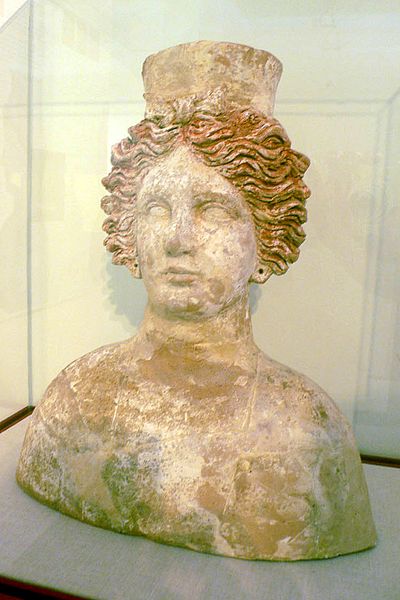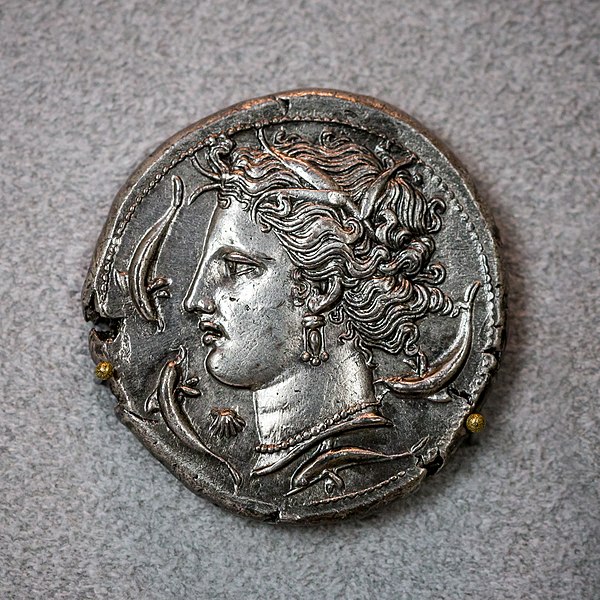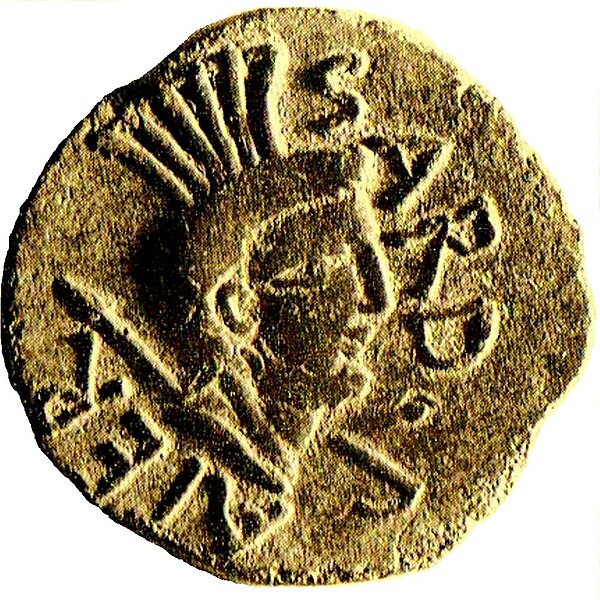Tanit or Tinnit was a Carthaginian Punic goddess, and the chief deity of Ancient Carthage, alongside her consort Baal Hammon.
Bust of a human figure that has been sometimes hypothesized to represent Tanit, but is more probably Demeterfound in the Carthaginian necropolis of Puig des Molins, dated 4th century BC, housed in the Museum of Puig des Molins in Ibiza, Spain
A Punic coin featuring Tanit, minted in Punic Carthage between 330 and 300 BCE.
Tanit with a lion's head
Stele with Tanit's symbol in Carthage's Tophet, including a crescent moon over the figure
The Punic religion, Carthaginian religion, or Western Phoenician religion in the western Mediterranean was a direct continuation of the Phoenician variety of the polytheistic ancient Canaanite religion. However, significant local differences developed over the centuries following the foundation of Carthage and other Punic communities elsewhere in North Africa, southern Spain, Sardinia, western Sicily, and Malta from the ninth century BC onward. After the conquest of these regions by the Roman Republic in the third and second centuries BC, Punic religious practices continued, surviving until the fourth century AD in some cases. As with most cultures of the ancient Mediterranean, Punic religion suffused their society and there was no stark distinction between religious and secular spheres. Sources on Punic religion are poor. There are no surviving literary sources and Punic religion is primarily reconstructed from inscriptions and archaeological evidence. An important sacred space in Punic religion appears to have been the large open air sanctuaries known as tophets in modern scholarship, in which urns containing the cremated bones of infants and animals were buried. There is a long-running scholarly debate about whether child sacrifice occurred at these locations, as suggested by Greco-Roman and biblical sources.

Adorned Statue of the Punic Goddess Tanit, 5th-3rd centuries BC, from the necropolis of Puig des Molins, Ibiza (Spain), now housed in the Archaeology Museum of Catalonia (Barcelona)
Stele from the tophet of Salammbô at Carthage, bearing the sign of Tanit.
Roman coin (59 BC) depicting Sid Babi (Sardus Pater), a Punic god worshipped in Sardinia.
Terra cotta incense burner in the shape of Baal-Hammon, 2nd century BCE, Carthage National Museum.








